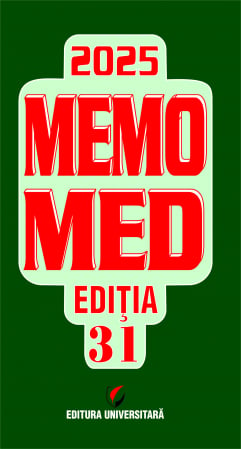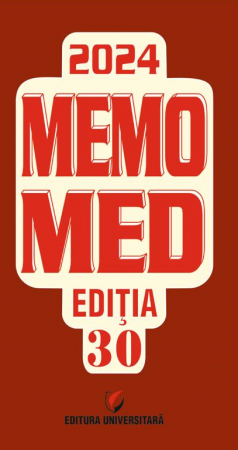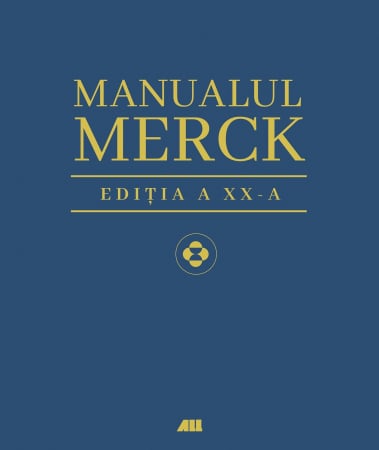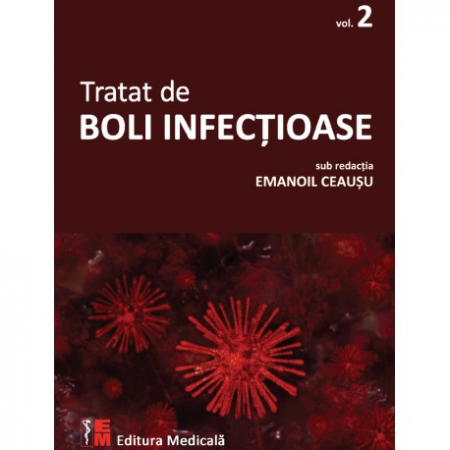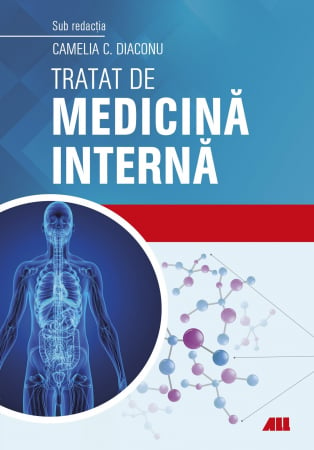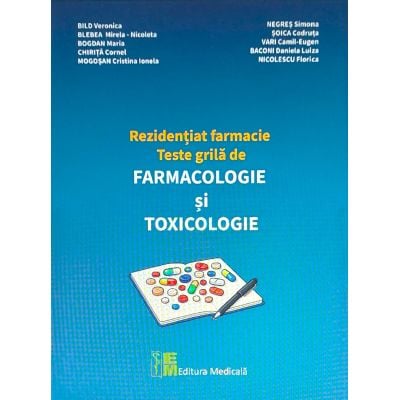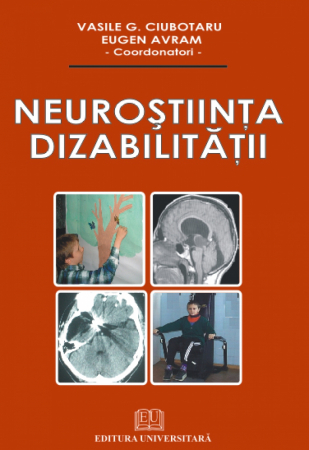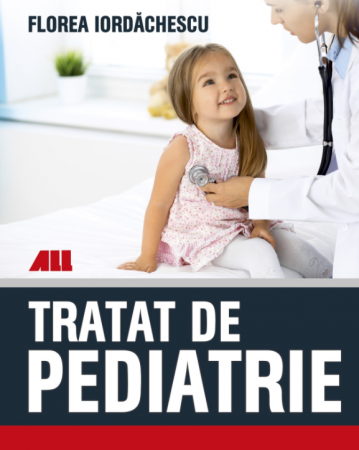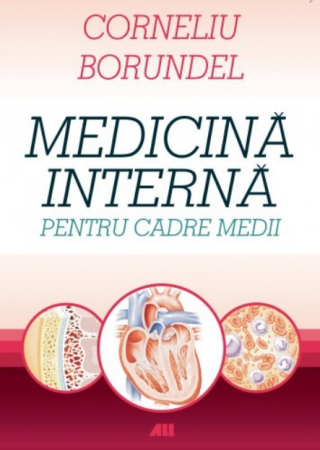Manuscript proposals: [email protected] / 0745 204 115 //// Tracking orders Individuals / Sales: 0745 200 357 / Orders Legal entities: 0721 722 783
ISBN: 978-606-28-0201-1
DOI: 10.5682/9786062802011
Publisher year: 2015
Pages: 296
Publisher: Editura Universitară
Author: Dumitru Dobrescu
Product Code:
9786062802011
Do you need help?
0745 200 357
- Description
- Download (1)
- Authors
- Content
- More details
- Reviews (0)
The appearance of this Phytotherapy seems to me to be an objective necessity, in the hope that it will be able to contribute to the clarification of some confusing ideas regarding the universe of the medicine. The use, often inappropriate, of many notions related to medicine, is found, unfortunately, both among health professionals and among the rest of the population.
I mention that the paper summarizes the essentials in the field. It is not a manual of Herbal Pharmacology and not even a "Precise".
In Romania there are numerous books on Phytotherapy. Some of them, written by our most competent professionals in the field of medicinal plants, are achievements of a certain scientific and practical value. These books were the bibliographic source for this book.
Other books are written for popularization.
All the mentioned works are prepared on the basis of classical classifications in the field.
The originality of my book consists in the fact that the material is structured, for the first time in Romanian, according to a pharmacological classification of medicinal plants, which I have not heard of in Romania.
This is the "Herbal ATC Index", a classification adopted by the World Health Organization (WHO) and which is a reproduction, adapted for medicinal plants, of the "ATC Index", the latest used by the WHO for allopathic medicines. This "ATC Index" is used to compile the Nomenclature of Allopathic Medicines of the Romanian Ministry of Health, since the '80s, as a result of my initiative.
My decision to prepare the Herbal ATC Index "Herbal ATC Index" expresses my personal conviction that a modern and correct phytotherapy can only be done on a scientific basis. And these bases can only be pharmacological.
The Herbal ATC Index includes herbal drugs that have been registered with the Uppsala Monitoring Center of the WHO Collaborating Center for International Drug Monitoring. It is stated that the inclusion in the Index, "is not an indication of proven safety and efficacy", but means that "information on medical use has been found in the literature". Therefore, I considered including four categories of plants in the book:
- Plants from the "Herbal ATC Index" for which we had enough data.
- Other plants from the "Herbal ATC Index" (1) included in this chapter, but not commented in Phytotherapy, due to lack of documentation. These are plants that do not grow and are not known in Romania. I mentioned them because they can be found in some foreign pharmaceuticals circulating in Romania.
- Other plants in the "Herbal ATC Index" (2), included in the Index, but in other chapters. These plants were included by me in that group, as there are arguments in the literature for these recommendations.
- Other plants (3), not included in the "Herbal ATC Index", but the data in the literature justify their use.
Prof. Dr. Dumitru Dobrescu
I mention that the paper summarizes the essentials in the field. It is not a manual of Herbal Pharmacology and not even a "Precise".
In Romania there are numerous books on Phytotherapy. Some of them, written by our most competent professionals in the field of medicinal plants, are achievements of a certain scientific and practical value. These books were the bibliographic source for this book.
Other books are written for popularization.
All the mentioned works are prepared on the basis of classical classifications in the field.
The originality of my book consists in the fact that the material is structured, for the first time in Romanian, according to a pharmacological classification of medicinal plants, which I have not heard of in Romania.
This is the "Herbal ATC Index", a classification adopted by the World Health Organization (WHO) and which is a reproduction, adapted for medicinal plants, of the "ATC Index", the latest used by the WHO for allopathic medicines. This "ATC Index" is used to compile the Nomenclature of Allopathic Medicines of the Romanian Ministry of Health, since the '80s, as a result of my initiative.
My decision to prepare the Herbal ATC Index "Herbal ATC Index" expresses my personal conviction that a modern and correct phytotherapy can only be done on a scientific basis. And these bases can only be pharmacological.
The Herbal ATC Index includes herbal drugs that have been registered with the Uppsala Monitoring Center of the WHO Collaborating Center for International Drug Monitoring. It is stated that the inclusion in the Index, "is not an indication of proven safety and efficacy", but means that "information on medical use has been found in the literature". Therefore, I considered including four categories of plants in the book:
- Plants from the "Herbal ATC Index" for which we had enough data.
- Other plants from the "Herbal ATC Index" (1) included in this chapter, but not commented in Phytotherapy, due to lack of documentation. These are plants that do not grow and are not known in Romania. I mentioned them because they can be found in some foreign pharmaceuticals circulating in Romania.
- Other plants in the "Herbal ATC Index" (2), included in the Index, but in other chapters. These plants were included by me in that group, as there are arguments in the literature for these recommendations.
- Other plants (3), not included in the "Herbal ATC Index", but the data in the literature justify their use.
Prof. Dr. Dumitru Dobrescu
-
Fitoterapie. Plantele, izvor de sanatate
Download
DUMITRU DOBRESCU
BY THE SAME AUTHOR
SINGLE AUTHOR:
- Pharmacodynamics. Practical works, Didactic and Pedagogical Publishing House, Bucharest, 1967 (365 pages).
- Pharmacodynamics, Didactic and Pedagogical Publishing House, Bucharest, 1970 (556 pages).
- General pharmacodynamics. Scheduled education manual, Didactic and Pedagogical Publishing House, Bucharest, 1972 (204 pages).
- Pharmacodynamics. Second revised edition, Didactic and Pedagogical Publishing House, Bucharest, 1977 (588 pages).
- Pharmacotherapy, Medical Publishing House, Bucharest, 1981, (1053 pages). Victor Babes Award of the Romanian Academy. The book has an original structure and contains the chapter "Pharmacoepidemiology", for the first time in the international literature.
- Practical Pharmacotherapy, Medical Publishing House, Bucharest, 1989 (2 vols., 1058 pages).
- Gerontopharmacology, Mondan Publishing House, Bucharest, 1995 (369 pages).
- General homeopathic pharmacology, Minesan Publishing House, Bucharest, 2007 (267 pages) The first book with this title in the international medical literature - General Homeopathic Pharmacology. Edit. Tarus Media, Bucharest, 2008 (271 pages)
- Pharmacologie Homeopathique Générale, Editura Similia, Lyon, 2011.
- Homeopathic Pharmacology, vol. II, Respiratory System, Minesan Publishing House, Bucharest, 2009.
- Return to nature, Editura Universitara Publishing House, Bucharest, 2010.
FIRST AUTHOR:
- Pharmacology. Practical works, IMF Bucharest Publishing House, 1971, (300 pages)
- Combination of drugs. Pharmacodynamic incompatibilities, Medical Publishing House, Bucharest, 1971 (183 pages). The first book of its kind in international literature
- Medicines for the treatment of diseases of the digestive system, Minesan Publishing House, Bucharest, 2000 (320 pages)
- Memomed. Pharmacology Memorandum. Pharmacotherapeutic guide, Minesan Publishing House, Bucharest, 17 annual editions 1995–2011 (each edition with over 1000 pages).
COAUTHOR:
- Pharmacology. Practical works, IMF Publishing House Bucharest 1959.
- Romanian pharmaceutical products, Medical Publishing House, Bucharest, 1964 (776 pages). 12 chapters.
- Recent advances in medical therapeutics, Medical Publishing House, Bucharest, 1965. Chapter "Enzymes in therapeutics".
- Pharmacology. Manual, Didactic and Pedagogical Publishing House, Bucharest, 1965.
- Romanian pharmaceutical products, 2nd revised edition, Medical Publishing House, Bucharest, 1970.
- Medical therapy, under red. Radu Paun, Medical Publishing House, Bucharest, 1982. Chapter "Drug Interactions".
BY THE SAME AUTHOR
SINGLE AUTHOR:
- Pharmacodynamics. Practical works, Didactic and Pedagogical Publishing House, Bucharest, 1967 (365 pages).
- Pharmacodynamics, Didactic and Pedagogical Publishing House, Bucharest, 1970 (556 pages).
- General pharmacodynamics. Scheduled education manual, Didactic and Pedagogical Publishing House, Bucharest, 1972 (204 pages).
- Pharmacodynamics. Second revised edition, Didactic and Pedagogical Publishing House, Bucharest, 1977 (588 pages).
- Pharmacotherapy, Medical Publishing House, Bucharest, 1981, (1053 pages). Victor Babes Award of the Romanian Academy. The book has an original structure and contains the chapter "Pharmacoepidemiology", for the first time in the international literature.
- Practical Pharmacotherapy, Medical Publishing House, Bucharest, 1989 (2 vols., 1058 pages).
- Gerontopharmacology, Mondan Publishing House, Bucharest, 1995 (369 pages).
- General homeopathic pharmacology, Minesan Publishing House, Bucharest, 2007 (267 pages) The first book with this title in the international medical literature - General Homeopathic Pharmacology. Edit. Tarus Media, Bucharest, 2008 (271 pages)
- Pharmacologie Homeopathique Générale, Editura Similia, Lyon, 2011.
- Homeopathic Pharmacology, vol. II, Respiratory System, Minesan Publishing House, Bucharest, 2009.
- Return to nature, Editura Universitara Publishing House, Bucharest, 2010.
FIRST AUTHOR:
- Pharmacology. Practical works, IMF Bucharest Publishing House, 1971, (300 pages)
- Combination of drugs. Pharmacodynamic incompatibilities, Medical Publishing House, Bucharest, 1971 (183 pages). The first book of its kind in international literature
- Medicines for the treatment of diseases of the digestive system, Minesan Publishing House, Bucharest, 2000 (320 pages)
- Memomed. Pharmacology Memorandum. Pharmacotherapeutic guide, Minesan Publishing House, Bucharest, 17 annual editions 1995–2011 (each edition with over 1000 pages).
COAUTHOR:
- Pharmacology. Practical works, IMF Publishing House Bucharest 1959.
- Romanian pharmaceutical products, Medical Publishing House, Bucharest, 1964 (776 pages). 12 chapters.
- Recent advances in medical therapeutics, Medical Publishing House, Bucharest, 1965. Chapter "Enzymes in therapeutics".
- Pharmacology. Manual, Didactic and Pedagogical Publishing House, Bucharest, 1965.
- Romanian pharmaceutical products, 2nd revised edition, Medical Publishing House, Bucharest, 1970.
- Medical therapy, under red. Radu Paun, Medical Publishing House, Bucharest, 1982. Chapter "Drug Interactions".
How to use the book / 6
Preface / 7
Introduction / 9
Abbreviations and signs used / 12
HA. Digestive tract and metabolism / 13
HC. Cardiovascular system / 128
HD. Dermatological preparations / 146
HG. Genitourinary system and sex hormones / 164
HH. Systemic hormonal preparations excluding sex hormones and insulin / 188
HJ. Antiinfectives for systemic use / 189
HL. Antineoplastics and immunomodulators / 193
HM. Musculoskeletal system / 200
HN. Nervous system / 217
HP. Antiparasitic products, insecticides and insect repellents / 237
HR. Respiratory system / 245
HS. Sensitive organs / 262
HV. Varia / 264
Annex 1 - Phytotherapeutic Index / 265
Annex 2 - Index of scientific names / 284
Annex 3 - Index of Romanian popular names / 291
Bibliography / 297
Preface / 7
Introduction / 9
Abbreviations and signs used / 12
HA. Digestive tract and metabolism / 13
HC. Cardiovascular system / 128
HD. Dermatological preparations / 146
HG. Genitourinary system and sex hormones / 164
HH. Systemic hormonal preparations excluding sex hormones and insulin / 188
HJ. Antiinfectives for systemic use / 189
HL. Antineoplastics and immunomodulators / 193
HM. Musculoskeletal system / 200
HN. Nervous system / 217
HP. Antiparasitic products, insecticides and insect repellents / 237
HR. Respiratory system / 245
HS. Sensitive organs / 262
HV. Varia / 264
Annex 1 - Phytotherapeutic Index / 265
Annex 2 - Index of scientific names / 284
Annex 3 - Index of Romanian popular names / 291
Bibliography / 297
The science of the 21st century is characterized by the addition to its defining rigor, of a permanently increased complexity. The sciences of medicine are no exception to this rule.
Pharmacology is the science that studies the relationship between the body and drugs, a category of biologically active substances. The phenomena resulting from these interrelationships are as numerous as they are complex.
Studying and knowing them requires the use of terms of full accuracy and does not accept approximations.
Knowledge of drugs is "pharmacological" only when spoken in a general sense. Otherwise, this knowledge is necessarily part of one of the fundamental or applied branches of pharmacology. The fundamental branches are:
1) Pharmacokinetics, studies the evolution of drugs in the body, from administration to elimination.
2) Pharmacodynamics, studies the actions of drugs on body functions, at harmless doses and their intimate mechanisms.
3) Pharmacotoxicology, studies the unfavorable (adverse) effects of therapeutic doses and toxic effects.
The application branches correspond to each of the fundamental branches and represent their practical aspects.
4) Pharmacography applies the data set by pharmacokinetics.
5) Pharmacotherapy uses the observations made by pharmacodynamics and based on them establishes the therapeutic indications.
6) Pharmacoepidemiology takes into account the phenomena studied by pharmacotoxicology and establishes the contraindications and precautions.
Given the above it is clear that Phytotherapy is an application branch of the Pharmacology of herbal medicines.
In the books called "Phytotherapy" are included, in addition to therapeutic indications, which correspond to the name of the book and data of pharmacodynamics, pharmacotoxicology, pharmacoepidemiology, pharmacography. These latter data are not expressed in the title of the book, but are useful to ensure therapeutic efficacy.
For the first edition, I considered it necessary to keep the term consecrated by Phytotherapy, which is partially correct, but is the one currently understood by most readers.
*
We developed this Phytotherapy prepared on the pharmacological structure, offered by the ATC classification of drugs, used as an official document, by the World Health Organization.
This realization allows to make a comparison between herbal and chemical-allopathic medicines. In reality, medicinal plants and their pharmacology, as they are currently used in phytotherapy, are an integral part of allopathic medicines and their pharmacology.
The mentioned comparison shows some interesting aspects.
- There are significant differences between the 14 chapters of the ATC classification, marked in letters A – V, corresponding to important structures and functions.
- For medicinal plants, the most richly represented chapters are: the digestive tract and the respiratory system. It can be observed that at the level of these devices, the highest percentages of diseases are registered, with many mild and medium cases, which are suitable for treatment with medicinal plants, which is effective and less aggressive.
Some chapters have an average volume, lower than allopathic comedies. There are chapters on frequently moderate or more serious diseases, which are better treated with allopathic medicines. I quote the chapters cardiovascular system, dermatology, genitourinary system, musculoskeletal system, nervous system.
- The blood chapter is almost absent, and the hormones, antiinfectives, antineoplastic chapters have insignificant dimensions.
This comparative presentation, although brief, I think may be an argument in a plea for the usefulness of both categories of drugs and their justified use, according to the current state of pharmacology knowledge.
*
The Phytotherapy book allows another comment.
Medicinal plants act on the body due to their content in some "active substances".
They have chemical structures that are classified into distinct categories. Chemical structures of a certain type have attraction (tropism) and affinity for certain structures of the body. Hence the pharmacodynamic actions characteristic of each drug chemical structure and therefore the classification into certain pharmacological groups.
On the other hand, many herbs contain active substances with many different chemical structures (tannins, flavones, coumarins, bitter principles, iridoids, etc.). This determines a reduced selectivity of the actions and the belonging of a medicinal plant to several pharmacological groups. Significantly, in this sense, is the large number of medicinal plants carminative (67), digestive (24), diuretic (43), anti-inflammatory (29), hypnotic and sedative (32), expectorant and emollient (63), antitussive (33) . Some plants are found in several of the groups mentioned.
Pharmacology is the science that studies the relationship between the body and drugs, a category of biologically active substances. The phenomena resulting from these interrelationships are as numerous as they are complex.
Studying and knowing them requires the use of terms of full accuracy and does not accept approximations.
Knowledge of drugs is "pharmacological" only when spoken in a general sense. Otherwise, this knowledge is necessarily part of one of the fundamental or applied branches of pharmacology. The fundamental branches are:
1) Pharmacokinetics, studies the evolution of drugs in the body, from administration to elimination.
2) Pharmacodynamics, studies the actions of drugs on body functions, at harmless doses and their intimate mechanisms.
3) Pharmacotoxicology, studies the unfavorable (adverse) effects of therapeutic doses and toxic effects.
The application branches correspond to each of the fundamental branches and represent their practical aspects.
4) Pharmacography applies the data set by pharmacokinetics.
5) Pharmacotherapy uses the observations made by pharmacodynamics and based on them establishes the therapeutic indications.
6) Pharmacoepidemiology takes into account the phenomena studied by pharmacotoxicology and establishes the contraindications and precautions.
Given the above it is clear that Phytotherapy is an application branch of the Pharmacology of herbal medicines.
In the books called "Phytotherapy" are included, in addition to therapeutic indications, which correspond to the name of the book and data of pharmacodynamics, pharmacotoxicology, pharmacoepidemiology, pharmacography. These latter data are not expressed in the title of the book, but are useful to ensure therapeutic efficacy.
For the first edition, I considered it necessary to keep the term consecrated by Phytotherapy, which is partially correct, but is the one currently understood by most readers.
*
We developed this Phytotherapy prepared on the pharmacological structure, offered by the ATC classification of drugs, used as an official document, by the World Health Organization.
This realization allows to make a comparison between herbal and chemical-allopathic medicines. In reality, medicinal plants and their pharmacology, as they are currently used in phytotherapy, are an integral part of allopathic medicines and their pharmacology.
The mentioned comparison shows some interesting aspects.
- There are significant differences between the 14 chapters of the ATC classification, marked in letters A – V, corresponding to important structures and functions.
- For medicinal plants, the most richly represented chapters are: the digestive tract and the respiratory system. It can be observed that at the level of these devices, the highest percentages of diseases are registered, with many mild and medium cases, which are suitable for treatment with medicinal plants, which is effective and less aggressive.
Some chapters have an average volume, lower than allopathic comedies. There are chapters on frequently moderate or more serious diseases, which are better treated with allopathic medicines. I quote the chapters cardiovascular system, dermatology, genitourinary system, musculoskeletal system, nervous system.
- The blood chapter is almost absent, and the hormones, antiinfectives, antineoplastic chapters have insignificant dimensions.
This comparative presentation, although brief, I think may be an argument in a plea for the usefulness of both categories of drugs and their justified use, according to the current state of pharmacology knowledge.
*
The Phytotherapy book allows another comment.
Medicinal plants act on the body due to their content in some "active substances".
They have chemical structures that are classified into distinct categories. Chemical structures of a certain type have attraction (tropism) and affinity for certain structures of the body. Hence the pharmacodynamic actions characteristic of each drug chemical structure and therefore the classification into certain pharmacological groups.
On the other hand, many herbs contain active substances with many different chemical structures (tannins, flavones, coumarins, bitter principles, iridoids, etc.). This determines a reduced selectivity of the actions and the belonging of a medicinal plant to several pharmacological groups. Significantly, in this sense, is the large number of medicinal plants carminative (67), digestive (24), diuretic (43), anti-inflammatory (29), hypnotic and sedative (32), expectorant and emollient (63), antitussive (33) . Some plants are found in several of the groups mentioned.
If you want to express your opinion about this product you can add a review.
write a review

6359.png)
![Phytotherapy. Plants, Source of Health [1] Phytotherapy. Plants, Source of Health [1]](https://gomagcdn.ro/domains/editurauniversitara.ro/files/product/large/fitoterapie-plantele-izvor-de-sanatate-824-3659.jpg)

